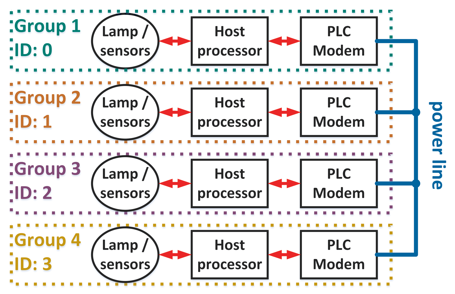Table of Contents
If a lantern lights up – it must be pretty “smart”; smart as the Anglophile would say.
These days, pretty much everything is smart – from the toaster to the TV to the light switch – which can make perfect sense, as it not only improves convenience but also reduces electricity consumption.
But why a “smart lantern” of all things?
This question only arises because very few people are aware of the huge amounts of energy consumed by conventional street lighting – it is usually switched on all night long, regardless of whether anyone is passing by or not.
There are currently over 90 million street lights in Europe, over nine million of them in Germany alone. Although the trend is towards ever more economical light sources, electricity consumption is around 60 terawatt hours – that’s a good 2.5% of total European electricity consumption. Not only do CO2 emissions have to be reduced, or in Germany almost a third of the municipal budget has to be spent on lighting – worse still, a large proportion of it is completely pointless!
To solve this problem, the research group led by Prof. Dr. Jesser from Heilbronn University has developed a decentralized system that only activates the streetlights when they are needed and is even able to tell its “neighbors” when they too should “turn on a light”.
This system is characterized in particular by the decentralized control system – existing systems with similar functionality are usually controlled by a central computer, which makes the systems comparatively complex; nevertheless, such centralized systems have shown one thing: massive energy savings are possible! The pilot project “Sitraffic Concert” and “VIA LUMEN”, which was carried out by the city of Düsseldorf in cooperation with Siemens, showed that energy consumption can be reduced by 30% by switching the lighting on demand [1].
The decentralized structure of the new solution can be clearly seen in this illustration: each individual group – consisting of a lamp and sensor, a small processor and a Power Line Communication (PLC) modem – communicates with each other via the power grid.

In order to achieve the set goal, Professor Jesser’s group created a miniature street model in which sensors detect movements on the road. A computer, which controls the individual streetlights, evaluates and processes the data collected by the sensors. The computer communicates with the sensors and the streetlights via PLC in order to minimize the effort required for retrofitting in the field. The advantage of this technology is that it can use existing infrastructure – the power lines that supply the lamps – for communication. And let’s be honest – how often do you get to areas that are not covered by mobile phone networks, making communication via these impossible?
The fundamental advantage of a computerized solution is that, in contrast to “semi-dumb” systems in which the light is only activated by a simple motion sensor, it is possible to control the light on the basis of a wide variety of analyses: if there is a lot of traffic, all the lamps can simply be switched on permanently; if there is little traffic, it is not only possible to illuminate only the immediate vicinity of the road user, but also to switch on the lanterns in advance based on the direction and speed of the vehicle – the driver feels as if the road is completely illuminated!

No car – all lights off (1). If a vehicle arrives and is detected by a sensor (3), the lighting in the area of the vehicle is activated; thanks to suitable programming, the system is now able to activate the lighting in the area of the vehicle – in this example, one lantern before and one after the vehicle.
In order to test the system realistically in the model and to ensure that stable communication between the individual lanterns via PLC is possible despite the various disturbances in the power grid, a model of a medium-current line was built using equivalent circuits consisting of resistors, coils and capacitors – a so-called “telegrapher’s” model [2].

This laboratory setup simulates the attenuation and signal interference on a power line in the model.
Each of the 8 boards on the left (1) simulates approx. 200m of power line, with taps for various measurements available approximately every “100m” (2). The circuits in the middle (3) are powerline development kits from Texas Instruments (TMDSPLCKIT-V3) which enable experiments with different signal modulations such as “frequency-shift keying” (FSK), “spread frequency shift keying” (S-FSK) or “orthogonal frequency-division multiplexing” (OFDM). Each of these modules has its own decentralized computer, in this case a Raspberry Pi (4), which evaluates the signals from the sensors (5) and intelligently controls the lanterns (6) for passing vehicles (6).

The laboratory setup showed that on a standard 230V power line, which is normally used to supply street lamps, the average received signal only drops by 20 dBµV after a distance of around 1.5 kilometers – in practice, this means that secure communication at a low data rate is possible up to this distance without any problems. Field tests have shown that the data obtained in the experiment is consistent with reality.
As the typical distance from street lamps in Germany is between 30 and 60 meters, there is nothing to stop the technology being used in the field – secure and reliable communication between the individual groups is possible.
Promising field trials with this and similar systems are now being carried out in various countries, particularly in Dubai; let’s hope that these systems can become more and more established and thus save large amounts of energy!
References
[1] Siemens AG: “Control cabinets for “intelligent streetlighting”, 2013
[2] Cataliotti A., Daidone A., Sanacore G., Tinè, G.: “Characterization of Medium Voltage Cables for Power Line Communication”, IEEE Transactions on Power Delivery, 2009




